Call Us 24/7
+971 55 817 1170Send Us Mail
[email protected]The Truck’s Braking System
x
Call Us 24/7
+971 55 817 1170Send Us Mail
[email protected]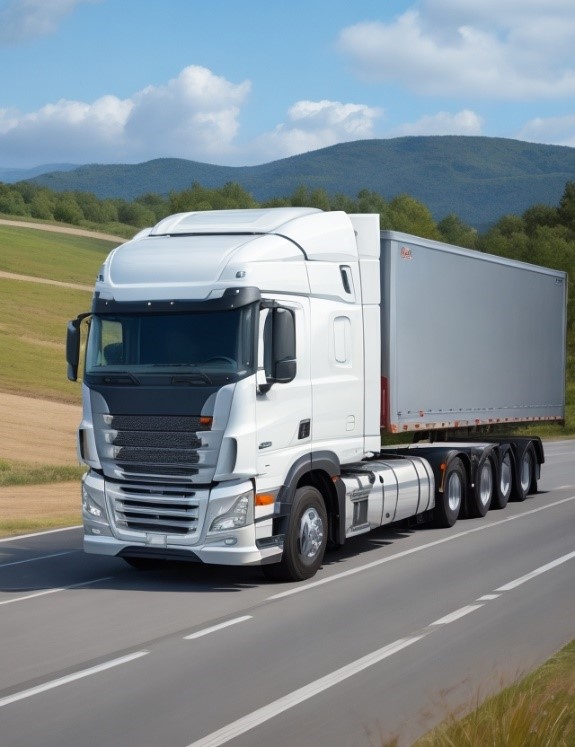
Are you wondering how heavy trucks on UAE’s highways manage to slow down or stop despite the weight? Their braking systems must be so powerful to deliver effective stopping power under such extreme conditions. In this article, we will explore the truck’s braking system and its components. Keep reading to discover more.
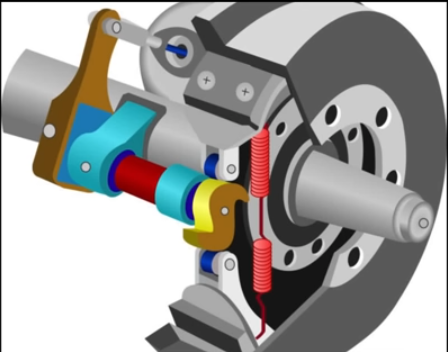
A truck’s brakes differ from those of a regular car. While most cars use hydraulic brake systems, trucks use air brakes or pneumatic brakes.
A hydraulic brake system requires hydraulic fluid, while truck air brakes utilize compressed air to operate effectively. The main advantage of air brakes is an unlimited supply of air compared to hydraulic fluid in hydraulic brake systems, which can run out.
The brake truck comprises several systems, including:
The truck’s service brake system utilizes a brake drum or a disc brake system. Some trucks use a combination of both brake systems.
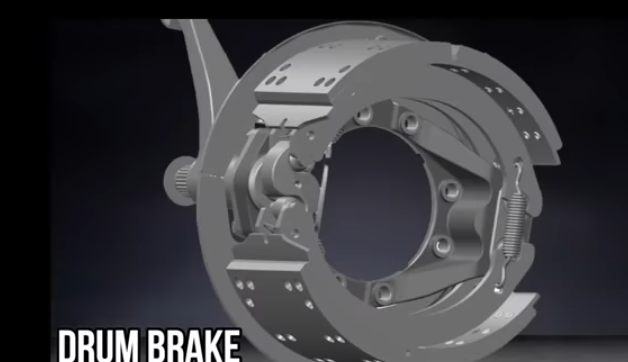
A brake drum system is a braking mechanism used to slow down or stop your vehicle. It is commonly used in heavy-duty trucks, buses, and other large vehicle applications. The key components of a brake drum system include brake shoes, brake drums, wheel cylinders, and brake linings.
You can source custom semi-truck brake drums from renowned suppliers in UAE. A professional can also provide helpful information regarding semi-truck brake adjustment and maintenance.
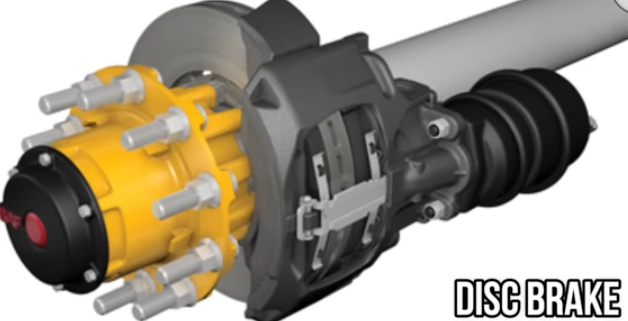
A disc brake system comprises several components, including brake discs or rotors, brake calipers, and brake pads. This brake system is common in various vehicles, including trucks, cars, motorcycles, etc.
Below is a brake truck system diagram that can help you understand your brake system better.
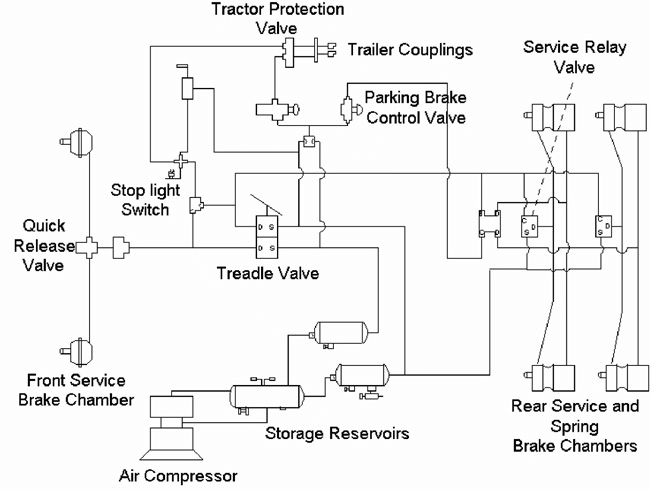
Courtesy of Research Gate.
Truck air brakes use compressed air to control the braking of large vehicles like trucks, buses, and trains. The process begins with an air compressor attached to the engine. This compressor pressurizes air from the atmosphere and stores it in the air reservoirs or tanks located in the vehicle.
The air reservoirs store the compressed air at high pressure. This pressurized air is the energy source that activates the brake system. The brake control valves regulate the release of compressed air from the reservoirs.
When you press the brake pedals, the brake valves open, allowing the pressurized air to flow to the brake chambers. The chambers consist of a diaphragm and a pushrod. The brake chambers convert the energy stored in the compressed air into mechanical force. When the compressed air enters the brake chamber, it pushes against the diaphragm, which in turn presses the pushrod.
The pushrod from the brake chamber is connected to an S-Cam, a rotating camshaft. As the S-Cam turns, it pushes the brake shoes against the brake drum. This friction between the brake shoes and the drum creates the braking force, slowing down the vehicle. In a disc brake system, brake pads push against the rotating disc slowing down your truck.
In emergencies, where the normal air pressure is lost, vehicles equipped with air brakes have a separate emergency brake system. This system uses a spring brake chamber that engages the brakes when air pressure drops below a certain level. This ensures that you can still stop your truck even when your primary braking system fails.
The UAE’s high temperatures and demanding road conditions require a reliable and consistent braking system. With the weight of heavy-duty trucks, each braking component needs to work optimally to generate enough friction and handle the increased heat generated during braking.
A brake truck system comprises several components that ensure your vehicle stops safely and efficiently. The key to a reliable braking system is choosing high-quality truck brake parts. Below are the key components of a truck’s braking system.
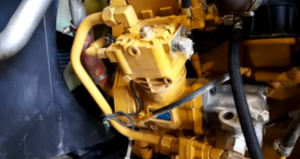
The air compressor pressurizes air from the atmosphere. It supplies the compressed air that your truck needs to complete the braking process.
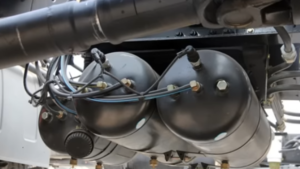
The reservoirs store the compressed air from the compressor. The stored air is used to apply the brakes and ensure consistent braking performance. The tanks also provide an immediate source of air when needed.

The brake pedal is what you use to control the braking action. Pressing the brake pedal controls the release of air from the system, leading to brake application.
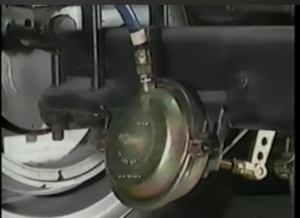
These devices convert the compressed air pressure into mechanical force, which in turn operates the brake shoes or brake pads. The force generated by the brake chambers causes the braking components to engage and create friction against the wheels, slowing down the truck.
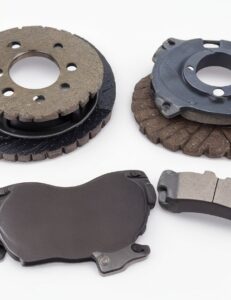
These components contact the brake drums or brake discs to create friction and slow down the vehicle. Brake shoes are used in drum brakes, while brake pads are used in disc brakes.
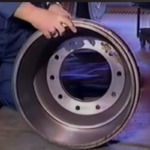
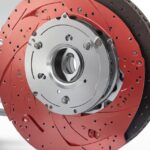
These are the rotating components of the wheel assembly against which the brake shoes/pads create friction.
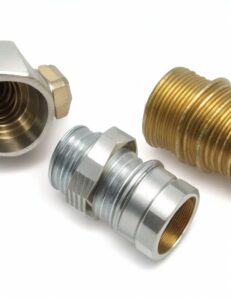
Truck air brake hose fittings are essential for connecting various air brake system components. These fittings ensure a secure connection between hoses, valves, and other parts, maintaining the integrity of the air pressure distribution.

Brake boosters amplify the braking force when you press the brake pedal, making it easier to brake consistently. They are particularly beneficial for long-haul journeys on UAE’s extensive highways. You can get your Hino truck brake booster from a reliable supplier.
ABS is an advanced safety feature that prevents the wheels from locking up during hard braking. It regulates brake pressure rapidly to maintain steering control and reduce the risk of skidding.
Here are some maintenance tips for your truck’s brakes:
The braking system’s function is to slow down or stop a vehicle, enhancing control and ensuring safety.
Brake failure in trucks can result from issues such as air leaks, contaminated brake fluid, faulty valves, worn brake linings, or improper maintenance of the air brake system.
Signs of truck brake failure in pneumatic brake systems include:
A reliable braking system keeps heavy-duty trucks running effectively in UAE’s extreme conditions. Understanding truck brake components and their relevance helps you ensure your safety on the road. From brake truck mechanisms to semi-truck brake drums and air brake hose fittings, each part plays a vital role in maintaining control and preventing accidents. If you require additional assistance, get in touch with us today.
Progressively maintain extensive infomediaries via extensible nich. Capitalize on low hanging fruit. a ballpark value added is activity to beta test. Override the digital divide with additional click throughs from fruit.

No products in the cart.
